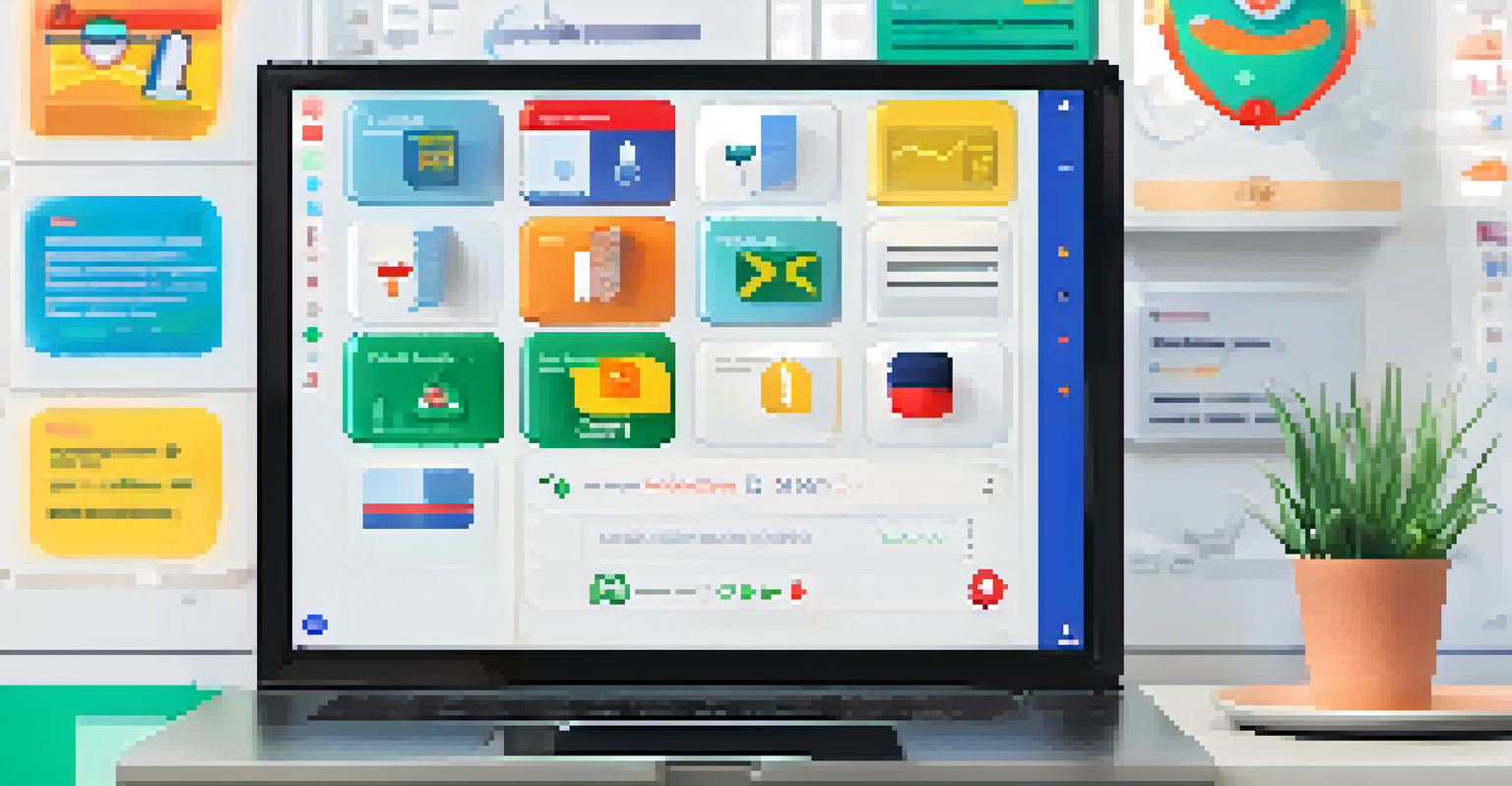Building a Multilingual Chatbot for Global Reach

Understanding the Importance of Multilingual Chatbots
In today’s global market, reaching customers in their native language is crucial. A multilingual chatbot can break down language barriers, allowing businesses to connect with a diverse audience. When customers feel understood in their language, their trust and loyalty towards a brand can significantly increase.
Language is the road map of a culture. It tells you where its people come from and where they are going.
Imagine a tourist in a foreign country trying to find directions. If they could communicate with a local chatbot in their own language, the experience would be not only smoother but also more enjoyable. This is the power of multilingual chatbots—they enhance user experience and engagement.
Moreover, offering support in multiple languages can lead to higher conversion rates. When a customer can interact with your brand comfortably, they’re more likely to make a purchase or seek assistance, ultimately boosting your bottom line.
Identifying Target Languages for Your Chatbot
Choosing the right languages for your chatbot is a fundamental step. Start by analyzing your customer base and identifying which languages are most prevalent among your users. This data-driven approach ensures that your chatbot effectively addresses the needs of your audience.

For example, if your website attracts visitors from both Spain and Brazil, including Spanish and Portuguese in your chatbot's language options makes perfect sense. This tailored approach not only improves engagement but also demonstrates your commitment to customer service.
Boost Engagement with Multilingual Chatbots
Multilingual chatbots enhance user experience by breaking down language barriers, fostering trust, and increasing customer loyalty.
Additionally, consider future growth when selecting languages. As your business expands into new regions, having a flexible chatbot that can easily integrate new languages will keep you ahead of the competition.
Choosing the Right Technology for Your Chatbot
Selecting the right technology stack is critical for developing a multilingual chatbot. There are various platforms available, such as Dialogflow, Microsoft Bot Framework, and IBM Watson, each offering unique features. It's essential to choose a platform that supports multiple languages and provides robust natural language processing capabilities.
The limits of my language mean the limits of my world.
For instance, if you're looking for advanced language understanding, Dialogflow might be the best fit, as it offers built-in support for numerous languages. This means you can focus on designing the user experience rather than worrying about the technical complexities of language processing.
Furthermore, ensure that the chosen technology can seamlessly integrate with your existing systems. This compatibility will make it easier to manage customer interactions and maintain a cohesive brand experience across all touchpoints.
Designing Conversational Flows for Different Languages
Crafting conversational flows that cater to different languages requires careful consideration of cultural nuances and language structure. Simply translating your existing chatbot scripts is often insufficient; you need to adapt them to resonate with users in each language. This means understanding local expressions, idioms, and even humor.
For example, the way questions are phrased in English may not translate directly into Spanish or Mandarin. Instead of a word-for-word translation, think about the intent behind the message and how to convey that effectively in different languages.
Tailor Your Chatbot to Target Languages
Identifying and incorporating the right languages for your chatbot based on customer demographics ensures effective communication.
Additionally, testing your conversational flows with native speakers can help you refine the interactions. Their feedback will ensure that your chatbot feels natural and user-friendly, no matter the language.
Implementing Language Detection Features
Integrating language detection capabilities into your chatbot can enhance user experience significantly. By automatically identifying the user's preferred language, your chatbot can respond appropriately without requiring the user to make selections manually. This streamlines the interaction and makes it more intuitive.
For example, if a user types a message in French, the chatbot should immediately recognize this and respond in French, creating a seamless experience. This feature not only saves time but also reduces the chances of miscommunication.
Furthermore, incorporating fallback options in case of unrecognized languages can help maintain a positive interaction. For instance, if the chatbot cannot detect the language, it could prompt the user to select their language from a list, ensuring the conversation continues smoothly.
Testing and Optimizing Your Multilingual Chatbot
Testing is a critical step in the development of any chatbot, and this is especially true for multilingual versions. Conduct thorough testing in all supported languages to ensure that the chatbot responds correctly and contextually. This includes checking for accurate translations and cultural appropriateness.
A/B testing can be particularly useful here. By comparing different versions of your chatbot interactions in various languages, you can identify which approaches yield better user engagement and satisfaction. This data-driven strategy allows you to continuously refine the user experience.
Continuous Improvement for Success
Regular updates and adaptations to your multilingual chatbot are essential for maintaining relevance and meeting the evolving needs of global customers.
Don't forget to gather user feedback after launch. Encouraging users to share their experiences can provide invaluable insights into areas for improvement, ensuring your chatbot evolves to meet changing user needs.
Continuously Updating Your Chatbot for Global Success
Just like any other digital tool, your multilingual chatbot requires ongoing updates and improvements. As languages evolve and new slang or expressions emerge, it’s crucial to keep your chatbot’s language database current. Regular updates will ensure that your chatbot remains relevant and effective.
Moreover, expanding into new markets may require introducing additional languages or adapting existing content to better fit local customs. This adaptability is key to maintaining a strong global presence and meeting the needs of diverse customers.

Lastly, stay informed about technological advancements in AI and natural language processing. Incorporating new features or capabilities can enhance your chatbot’s performance, making it an even more valuable asset for your business.